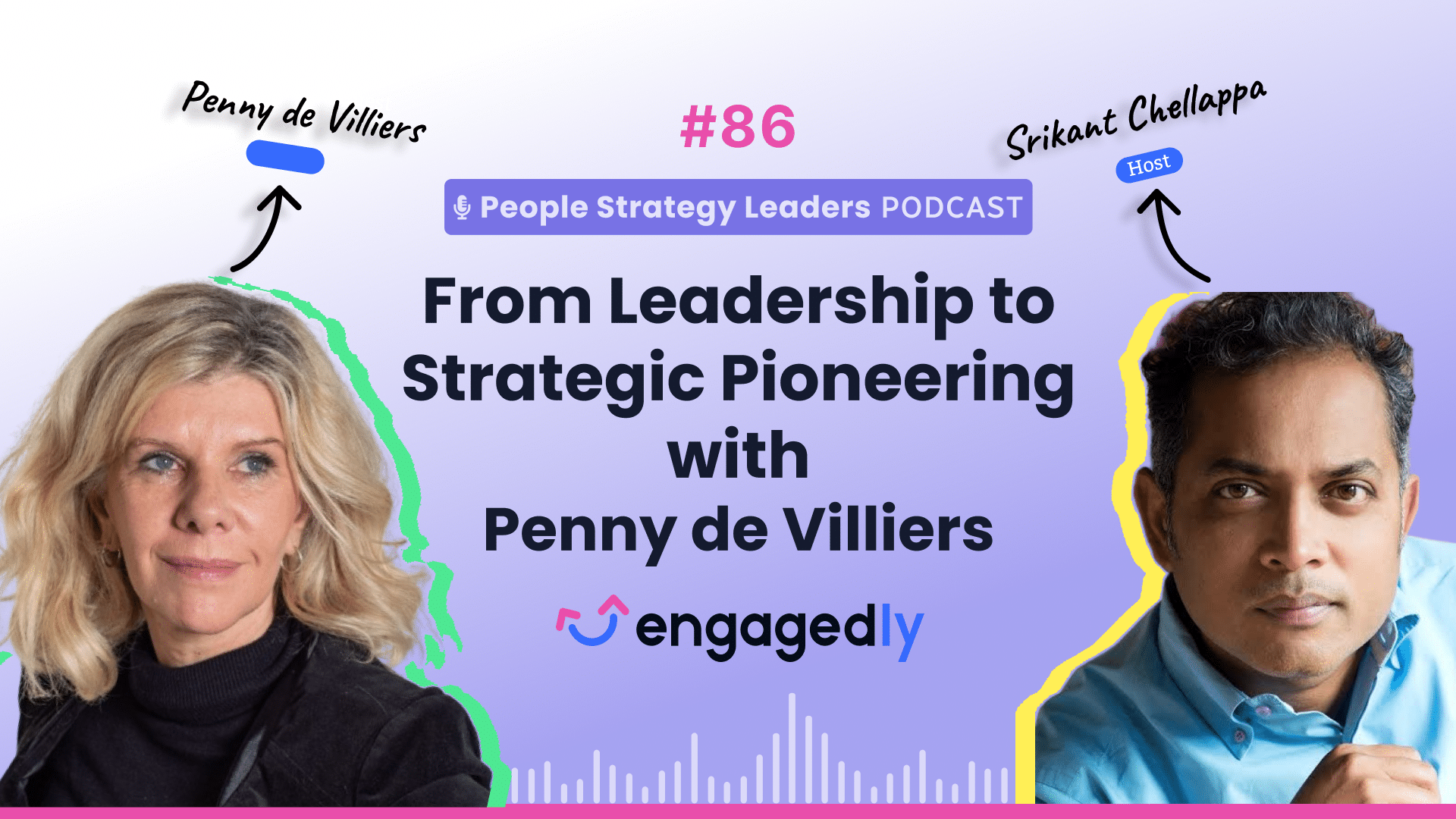In a world where hustle culture has become the norm and burnout statistics are skyrocketing, one voice is calling for a fundamental rethink—Penny de Villiers, founder of Rebalance Life and author of From Leadership to Strategic Pioneering.
In a recent episode of the People Strategy Leaders Podcast, Penny joined host Sri Chellappa to share her powerful personal journey through burnout and explain why exhaustion at work isn’t about personal weakness—it’s about broken systems. She challenges leaders to rethink how work is designed so that performance and well-being can coexist.
Burnout Is a System Problem
“Burnout is not a failure of individual resilience—it’s a system malfunction,” Penny explains. For too long, leaders have treated exhaustion as an employee problem, urging people to build boundaries or “tough it out.” But the real issue, she argues, lies in outdated work structures, constant pressure, and cultures that reward overwork.
The result? Employees and executives alike become disengaged, cynical, and physically drained. Penny points to research showing that over 70% of workers experienced burnout in the past year—a red flag that organizations can no longer ignore.
The Hidden Costs of Hustle Culture
Burnout isn’t just bad for people—it’s bad for business. Penny highlights Deloitte’s estimates that burnout costs organizations billions in lost productivity and turnover each year. Beyond the numbers, it erodes culture, damages customer experience, and limits innovation.
“When people are exhausted, they’re not creative, collaborative, or engaged,” she says. “Well-being isn’t a perk—it’s a performance infrastructure.”
The 18 Strategic Shifts Leaders Must Make
In her book, Penny outlines 18 strategic shifts leaders can adopt to prevent burnout and build change-fit cultures. Some of the most critical include:
- Psychological safety: Creating an environment where people feel safe to speak up, share ideas, and admit mistakes.
- Energy management: Redesigning work cycles around natural rhythms—like encouraging breaks every 90 minutes for focus and recovery.
- Techno-stress management: Protecting teams from the constant ping of after-hours emails, Slack messages, and digital overload.
- Performance redefined: Rewarding sustainable results, not late-night hustling or presenteeism.
These shifts aren’t about adding wellness perks—they’re about reengineering how organizations work.
The CEO’s Dilemma: Competition vs. Care
One of the biggest pushbacks Penny hears is from CEOs who feel they can’t afford to slow down in hyper-competitive industries. Whether it’s AI, retail, or logistics, leaders fear that prioritizing well-being will cost them market position.
Her response? Burnout is more expensive than care. Exhausted teams underperform, customers notice, and investors lose confidence. “If you want innovation, loyalty, and long-term equity, you need energized teams,” Penny insists.
Designing Work That Honors Human Biology
Perhaps one of Penny’s most compelling points is the need to design digital systems and workflows that align with human biology. From respecting rest cycles to limiting after-hours work creep, leaders must consider how today’s always-on culture impacts the nervous system.
“When people are rested and happy, they perform better,” Penny says. “We need to stop rewarding exhaustion and start rewarding renewal.”
Key Takeaways for Leaders
- Leadership is about legacy. Creating a workplace where people thrive builds long-term success.
- Burnout is systemic—not personal. Leaders must fix environments, not just people.
- Well-being drives performance. Energized teams innovate, collaborate, and stay loyal.
- Redesign matters. From meetings to digital systems, small shifts can transform culture.

